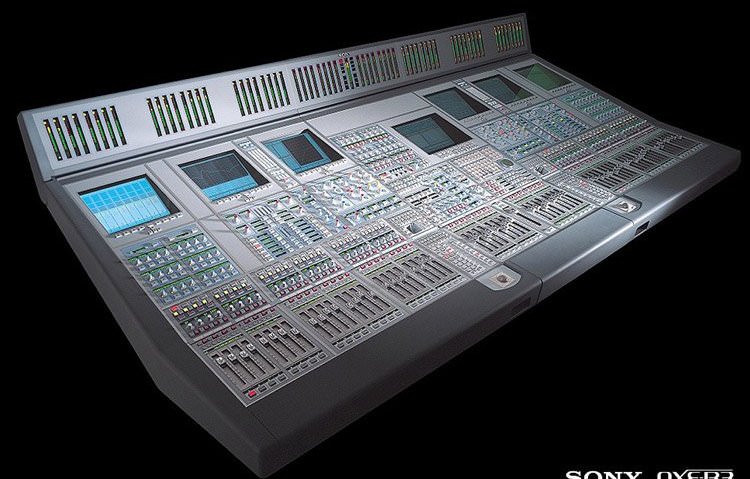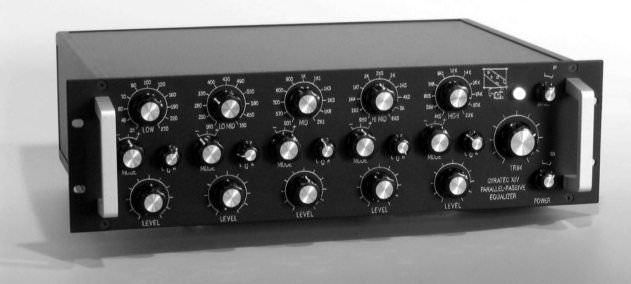Gyraf Gyratec XIV
The art of mastering demands a lot from an equaliser. Precision, accuracy and the ability to match channels and recall settings are a given, but beyond that things get a lot more subjective. Character can be good, but it’s not always desirable. The material itself will determine the priorities to some extent: are you looking for an ultra-crisp, bright poppy sheen or a more gritty sound?
Matt Colton offers up the Chandler TG12345 as an example of a great EQ which just doesn’t suit most dance music. “It’s a nice recreation of some of the classic EMI desk EQs used on albums like Pink Floyd’s Dark Side Of The Moon,” he tells us. “Unsurprisingly it sounds brilliant on 60s or 70s sounding recordings, but for me it would rarely if ever be the right choice for a modern electronic recording. It tends to slow down the transients and lacks the sweet open top end of other EQs.”
Having tried pretty much every mastering EQ on the market (and owned a fair selection of them along the way), Matt has settled on the Danish-made Gyraf Gyratec XIV, a two-channel passive model with five bands and valve-based gain circuits. “It’s a fantastic passive parallel five-band EQ,” he explains, “and incredible value for money. Being passive it offers tons of headroom, so you can dial in more gain than other types of EQ, and it has sweet top end for days, although the sub bass is a bit indistinct. The valve make-up gain gives some very pleasing colouration, but it’s cleaner than many valve designs.”
For comparison, Matt offers his thoughts on some of the other top options on the market. The Avalon AD2077 “weighs a ton, costs a fortune and it’s not subtle. Serious weight and character. When its tone’s appropriate for the recording it sounds incredible. A nice option to have rather than a go-to, everyday EQ”. The GML 9500 is “super fast, really lets the transients through and keeps things sounding sharp”. The Crane Song Ibis is “very clean and accurate, but also allows the option of dialling in distortion. Super tweaky – you might have to spend a while playing with it to get something good”. The Maselec MEA-2 is “not a character EQ, but the latest incarnation is a winner”.
A fantastic passive parallel five-band EQ, and incredible value for money.
The good news is that the G14 is relatively affordable by the standards of top-level mastering EQs. The bad news is that’s still a hell of a lot of money and there aren’t any software emulations available.


08.29 PM
I love you all.
08.53 PM
You missed KUSH! for higher, simply the best.
08.55 PM
PS I dot think you acknowledged that precision cuts are a different ballgame to those beautiful wide sweeps. Different tool.s.
09.00 PM
for me, Pultec for bass. Cambridge for tight cuts. and natives for gentleness. If that makes sense. Either way, keep up the good work.
09.29 PM
Maag?
03.01 AM
The most important Eq curve for dance music is the 24 or preferably 48 dB/Oct slope highpass filter. It allows producers with even average abilities to create low end and low mids that are complex and layered yet intelligible. Most producers I know have an Eq doing just this on good percentage of the tracks in every song. I’d say that for and EQ to truly be the EQ of dance music it would need to be able to not only do this but be available to do it on 10 or more (usually more) stereo tracks at the same time. This is where the humble native EQ in most daws shines with its low DSP rent high flexibility. It might not be the most glamorous or best sounding EQ but it might do more for the bass than even a pair of hardware pultec or even a gaggle of dsp pultecs. Add in its pre and post internal spectrum analyzer and it seems pretty amazing.
04.25 PM
I Love the IK Pulteq, it just makes most things sound better. Too easy to get carried away with it though.
06.48 PM
Just some notes on availability of these EQs as emulations. Both the API 500 series and Sonnox Oxford have officially licenced plug-in versions from Universal Audio.
http://www.uaudio.com/store/equalizers/api-500-series-eq-collection.html
http://www.uaudio.com/store/equalizers/oxford-eq.html
04.14 AM
KEEP up the phenomenal work guys!
10.16 AM
I own a clariphonic myself, and I don’t think there’s a better eq to focus and lift the highs on your 2-buss. Personally, I’m getting ready to sell my SSL E-series EQs so that I can pickup an Electra from Kush…
He’s doing it right.
11.59 AM
Awesome magazne with loads of very useful tricks and insights for the general producing general producers that just don’t have the means to approach music with real world professional knowledge. Very grateful and wish you a continuesly sucessful and quality ensured publication of such! 100% support :)
06.41 PM
Um how there is no baxendall eq here is just beyond me. The most used and useful eq of all time. Didn’t get a look in.
02.54 AM
Kush isn’t a secret anymore, the word is out. The best, most intuitive and creative EQ and Compressor I’ve ever used. Slow to upgrade completely to AAX, but worth the wait.
01.10 PM
Oh .. I love SSL EQ man ! its the amazing shit u can ever get 😀
12.54 AM
what about the millennia NSEQ-2, the GML 8200 and Maselec Mea 2 ? (there’s also the Crane IBIS)
06.12 AM
That mackie EQ is fucking shite, I can’t believe you put that next to the SSL, which is the mutt’s nuts.
02.00 AM
I use the 5500 in my mastering rig everyday. It’s stellar for fast program, passes every transient perfectly. Big bold sound. Not what I would call transparent but perfect for electronic music.
Will Brodeur
lacquer channel mastering.
10.33 PM
Elysia Xpressor is one notable absence from this list… the Elysia stuff is practically made for electronic music, so clean and precise.
06.03 AM
So why you not tell anything about NEVE EQ’s?